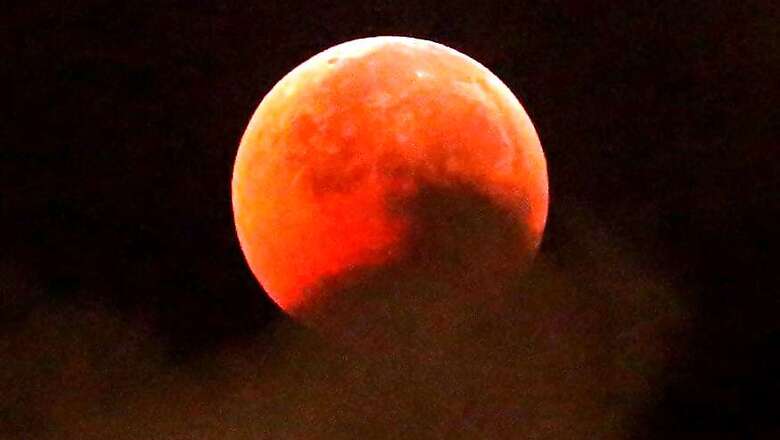
views
New York: Many lunar eclipse festivities were canceled due to a flash freeze across the central and northeastern US states on Sunday, with icy roadways rather than cloudy skies blamed by astronomers for spoiling the party.
Star gazers from Los Angeles to New York had planned to gather at parks and observatories to keep their eyes on the sky for the total eclipse, known as a super blood wolf moon, expected to appear at 11:41 p.m. EST (0441 GMT). Instead, astrology buffs were urged to witness the celestial wonder livestreamed online at sites such as AstronomersWithoutBorders.org.
Days earlier, it seemed the biggest threat to the cosmic fun was cloudy skies but it turned out a wet, wide-ranging snowstorm followed by a deep freeze on Sunday made driving and outdoor activities too hazardous. Eclipse parties were canceled from Indiana's Lemon Lake County Park to New Jersey's Rowan University.
"It's not the snow or cloudy skies, but rather the extreme cold, and what we fear may be hazardous travel conditions," said Pennsylvania's Carbon County Environmental Center, scrapping its party in Summit Hill, Pennsylvania, 54 miles (86 km) northwest of Allentown.
Although it is a total eclipse, the moon will never go completely dark but rather take on a coppery red glow - called a blood moon. It is also a full moon that is especially close to Earth, called a supermoon.
And since it appears in January, when wolves howled in hunger outside villages, it has earned the name wolf moon, according to The Farmers Almanac.
If skies are clear anywhere in the United States on Sunday night, the spectacular total lunar eclipse will be visible with the naked eye.
Unlike a solar eclipse, which requires eye protection to safely enjoy the view, no extra measures need to be taken for hazard-free lunar eclipse watching.
Next chance for Americans to see a total lunar eclipse is 2022.
The blood moon's red hue is the result of sunlight traveling through the Earth's dusty, polluted atmosphere, Fazekas said. The shorter, more pliable blue wavelengths of light are scattered outside the Earth's shadow and the longer, less bendable red wavelengths are refracted toward the moon.
Best viewing of the one-hour total eclipse will be from North and South America, with as many as 2.8 billion people able to see it from the Western Hemisphere, Europe, West Africa and northernmost Russia.Modi-Shah

















Comments
0 comment